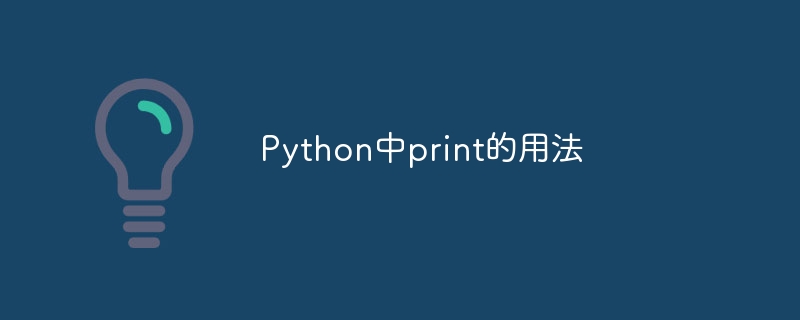

Python is a simple and easy-to-learn high-level programming language that is widely used in data analysis, artificial intelligence, web development and other fields. In Python, print is a commonly used function used to output results or debugging information on the screen. This article will introduce the usage of the print function in detail and provide specific code examples to help readers better master it.
First of all, the print function can accept multiple parameters and print them to the screen. These parameters can be strings, integers, floating point numbers, etc., or even variables, expressions, etc. Here are some examples:
print("Hello, World!")
# 输出:Hello, World!
name = "Alice"
age = 25
print("My name is", name, "and I am", age, "years old.")
# 输出:My name is Alice and I am 25 years old.
num1 = 10
num2 = 3
result = num1 / num2
print("The result is:", result)
# 输出:The result is: 3.3333333333333335It should be noted that when the print function prints multiple parameters, it uses spaces to separate them by default, but it can also be set by setting sep parameter to change the delimiter. In the following example, we set the delimiter to the tab character :
name = "Bob"
age = 30
print("Name:", name, "Age:", age, sep=" ")
# 输出:Name: Bob Age: 30 Additionally, the print function can also take the end parameter To specify the end of line terminator, the default is the newline character `. If we set end to the empty string ""`, we can achieve output without line breaks. The following is an example:
name = "Carol"
age = 35
print("My name is", name, end=". ")
print("I am", age, "years old.")
# 输出:My name is Carol. I am 35 years old.In actual development, we often need to output the value of a variable to the screen for debugging. For convenience, the print function also provides a way to format output, called "string interpolation". Using string interpolation, we can use placeholders in a string and then place the value to be inserted at the placeholder's location. Here is an example:
name = "David"
age = 40
print(f"My name is {name} and I am {age} years old.")
# 输出:My name is David and I am 40 years old.In addition to using string interpolation directly in the print function, we can also use the format method to achieve formatted output. The format method accepts one or more parameters and inserts them into the string at placeholder positions. The following is an example:
name = "Emily"
age = 45
print("My name is {} and I am {} years old.".format(name, age))
# 输出:My name is Emily and I am 45 years old.To summarize, the print function is a very commonly used function in Python, used to output results or debugging information on the screen. This article introduces the basic usage of the print function and provides specific code examples. After reading this article, readers should be able to use the print function more flexibly and understand how to use the parameters and methods it provides to achieve different output effects. I hope this article will be helpful for you to learn and use Python programming.
The above is the detailed content of Using the print function in Python. For more information, please follow other related articles on the PHP Chinese website!




